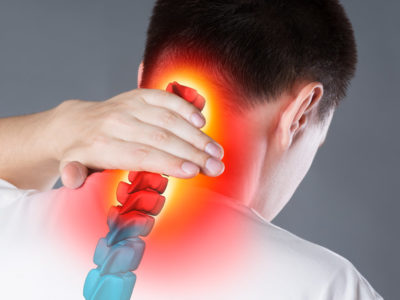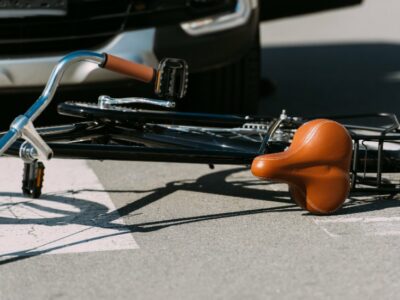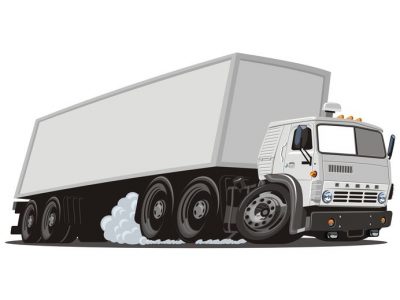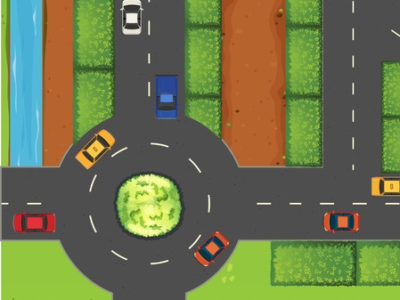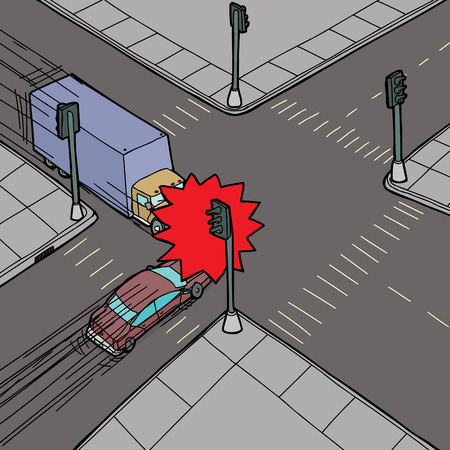

Determining Fault in Intersection Car Accidents
The vast majority of car crashes are caused by driver errors but in some cases, intersection car accidents are caused by poorly designed roads or intersections. Car insurance companies will use police reports and other information about the accident to help in determining fault in intersection car accidents.
If you were involved in an accident in an intersection and you’re not sure who is at fault, contact an experienced car accident lawyer who can evaluation your case.
Why do so many car accidents happen at intersections?
The risk for car accidents increases at intersections because cars are traveling in opposite and intersecting directions on two or more roads. When cars turn left or right or cross over lanes, the risk for auto accidents increases. According to data gathered by the National Automotive Sampling System-General Estimates System (NASS-GES): of the 5,811,000 crashes that occurred in the United States in 2008 about 40 percent were intersection-related crashes.
The most common roadway related accidents at intersections are crossing collisions. A crossing collision happens when a driver attempts to go through an intersection or while trying to turn into a lane.
Who is at fault in a car accident in an intersection?
Driver error
Like most accidents, driver error is the primary cause of accidents at intersections. For example, a driver running a red light or blowing through a stop sign would be at fault for crashing into a vehicle or pedestrian coming the other way.
Poorly designed roads or traffic control devices
If a driver enters an intersection with an obstructed view then he or she will not be able to make a decision about whether it is safe to cross. Traffic control devices are put in place to help drivers avoid car accidents but in some cases the needs of the intersection have outgrown the form of traffic control device in place. For example, a simple 4-way stop may have been adequate in the past but the number of cars using the intersection has tripled over the years and stop lights with a turn signal and left-hand turn lane are needed today to prevent car accidents. Separate left-hand turn lanes have been shown to reduce car accidents by more than 30 percent.
If a poorly designed roadway was the cause of your car accident at intersection then you may be in a position to sue the government entity responsible for the roadway. For example, an intersection that does not give all drivers a clear view of oncoming traffic is considered to be flawed and the problem should have been addressed by the highway department. If you believe that poor road design was responsible for your intersection accident, you will need to speak with an experienced car accident lawyer.
Proving fault in an intersection accident
In order for a plaintiff to make a case for a hazardous roadway, the car accident attorney must provide evidence that the intersection had become a known trouble spot for accidents. A car accident lawyer will typically locate reports of other similar collisions at the same location over a period of time. Because it is the responsibility of highway inspection agencies to track dangerous locations and devise and implement a plan to improve them, they can be held liable for not following through on their responsibility.
Determining right-of-way in car accidents
When a car accident happens it is important to determine which driver had the right-of-way at the time of the accident.
Here are some ways to know that you had the right of way prior to your car accident:
- You followed traffic lights or stop signs at controlled intersections.
- You yielded to cars already in the intersection at uncontrolled intersections. You yielded to the car to the right if you arrived at the intersection at the same time as another driver.
- If you were the driver on a one or two-lane road that intersected with a larger, multi-lane road; you yielded to cars on the multi-lane road.
- When you approached a T-intersection on a dead-end road you yielded to traffic on the through street.
- When you entered the highway on an on-ramp you yielded to vehicles on the highway.
- When you exited a highway on an exit ramp you yielded to drivers on the access road intersecting with the ramp.
- At a controlled intersection where the lights are temporarily turned off you treated it as a two-way stop. (The best way to prevent an accident in this circumstance is to assume that it is your turn to yield and proceed cautiously into the intersection when it is your turn.)
How car insurance companies determine fault for car accidents
When a person is injured in a car accident and a claim is made, insurance companies must first decide who is at fault in the car accident. If the case is brought to trial, a jury will be assigned the task of determining fault. In some cases, the injured party will be assigned a certain degree of fault.
In Washington State, fault can be shared in a personal injury case. Damages are awarded based on contributory fault law which says that you may only be awarded damages proportionate to the percentage of fault contributed by the defendant and nothing for the amount of fault that you contributed.
Always get a police report if you are in a car accident!
The police report plays a key role in the insurance company’s determination of fault as it is considered the most reliable account of what happened. It should answer how the accident happened and who caused the accident.
If you or a loved one is dealing with an accident or injury, you have enough on your plate. Let an experienced accident attorney fight for the full compensation that you deserve. It is not uncommon to receive a settlement from the insurance company that is five to ten times bigger with the help of a lawyer. Call the caring accident attorneys at Tario & Associates, P.S. in Bellingham, WA today for a FREE consultation! We have been representing residents of Whatcom County, Skagit County, Island County and Snohomish County since 1979. You will pay nothing up front and no attorney fees at all unless we recover damages for you!

